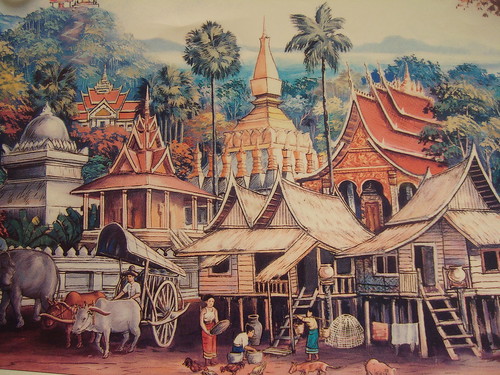
Certainly, there's a few standby items: Snapdragons, plumeria, pumpkin, nak (naga) jolokia ghost peppers, and the cherry tomato known as the Fantome du Laos.
This last one is particularly interesting to me because the local legend suggests these particular tomatoes glow when phi or other spirits are nearby. Which is not something we really want to experiment with, but it's handy to know just in case.
Camphor plants which were used to ward off phi were suggested, and we could consider the takian tree. But a takian tree may be a bit of overkill, as these are often considered significantly prone to becoming haunted.
You often spot the old ladies at festivals trying to sell the roots of the water caltrop as protective charms. These are often known as devil pods, bat nuts, goat heads, and similar descriptors. Banana, Mango, and Bodhi trees are also interesting candidates.
There are a few plants not native to Laos that I considered, such as the Venus fly-trap and other carnivorous plants. Mandrakes and the Paraguayan Graptopetalum, also known as a ghost plant come to mind. The konjak is also known as the voodoo lily, snake palm, or elephant yam, so this seems an appropriate inclusion, although they're mostly found in Japan and China.
Would we consider the African Harpagophytum, known as the Devil's Claw? Devil's Ivy and The Creeping Devil cactus are also interesting examples, and they are plants that would be good for people who aren't good at taking care of plants.
But what other plants might make good additions to such a garden?
No comments:
Post a Comment